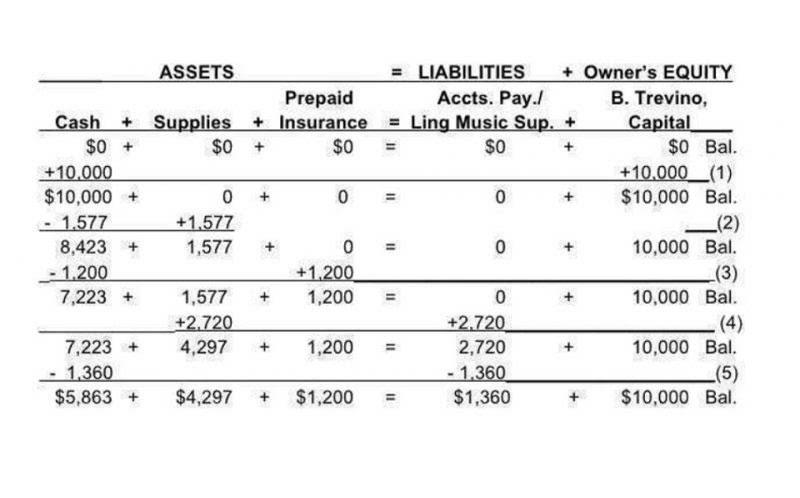
Unearned income cannot be contributed to individual retirement accounts (IRAs). According to the Internal Revenue Service (IRS), earned income includes wages, salaries, tips, and self-employment income. It is the measurement of only income component of an entity’s operations. The main component of revenue is the quantity sold multiplied by the price.
This liability represents an obligation of the company to render services or deliver goods in the future. It will be recognized as income only when the goods or services have been delivered or rendered. Unearned revenueSome businesses work by having their customers pay in advance for services, which translates into unearned revenue for those businesses. Unearned revenue is money that is received by a business before goods or services are provided.
What happens if you incorrectly report unearned revenue account?
Unearned revenue is recorded on the cash flow statement as a “deferred inflow of resources,” which is a liability account. But if the money is a prepayment, it doesn’t go on the income statement as recognized revenue. However, when the products or services are delivered to the customer, the company will reclassify the current revenue liability in the company’s income statement. Every month, once James receives his mystery boxes, Beeker’s will remove $40 from unearned revenue and convert it to revenue instead, as James is now in possession of the goods he purchased.
- In cash accounting, revenue and expenses are recognized when they are received and paid, respectively.
- However, both income statements and balance sheets are crucial financial statements when assessing a company.
- It’s essential to consult with a financial professional to ensure that unearned revenue is being recognized correctly and that there are no mistakes in financial reporting.
- We are simply separating the earned part from the unearned portion.
- However, a business owner must ensure the timely delivery of products to its consumers to keep transactions steady and drive customer retention.
- This is because the company has now fulfilled the obligation of delivering services or products, and the company has now earned unearned revenue.
The statement of cash flows shows what money is flowing into or out of the company. Earned revenue means you have provided the goods or services and therefore have met your obligations in the purchase contract. The credit and debit are the same amount, as is standard in double-entry bookkeeping.
Do I Put Unearned Service Revenue Under Revenue in an Income Statement?
Conversely, if you have received revenue from a client but not yet earned it, then you record the unearned revenue in the deferred revenue journal, which is a liability. James enjoys surprises, so he decides to order a six-month subscription service to a popular mystery box company from which he will receive a themed box each month full of surprise items. Like small businesses, larger companies can benefit from the cash flow of unearned revenue to pay for daily business operations.
Businesses can profit greatly from unearned revenue as customers pay in advance to receive their products or services. The cash flow received from unearned, or deferred, payments can be invested right back into the business, perhaps through purchasing more inventory or paying off debt. This is money paid to a business in advance, before it actually provides goods or services to a client. When the goods or services are provided, an adjusting entry is made.
How to Calculate Deferred Revenue
Any unearned income above $2,200, such as interest or dividends, may be subject to an unearned income tax. Alternatively, interest and dividend income of less than $11,000 may be included on the parent’s return rather than that of the child. Unearned revenue is the cash proceeds received by a company or individual for a service or product that the company or individual still has to deliver to the customer. Deferred expenses are assets on a company’s balance sheet because they are not yet recognized as an expense on the income statement. It’s important to accurately track and report unearned revenue, so you can properly manage profit margins. It is because the company still owes the products or services to the customer.

Let’s look at how this works under the different accounting systems. Get deep insights into your company’s MRR, churn and other vital metrics for your SaaS business. If you are having a hard time understanding this topic, I suggest you go over and study the lesson unearned revenue in income statement again. Preparing adjusting entries is one of the most challenging (but important) topics for beginners. Get instant access to video lessons taught by experienced investment bankers. Learn financial statement modeling, DCF, M&A, LBO, Comps and Excel shortcuts.
How to Convert Bank Deposits to Revenue in Accounting
There are specific accounting rules that dictate when, how, and why a company recognizes revenue. However, a company may not be able to recognize revenue until they’ve performed their part of the contractual obligation. Creating and adjusting journal entries for unearned revenue will be easier if your business uses the accrual accounting method when recording transactions. This means reviewing your balance sheet regularly to ensure that unearned revenue is being recognized correctly.
When services or products are provided to customers, the deferred revenue is reduced and the corresponding amount of earned revenue is recognized. Unearned revenue—also called deferred revenue—is money a company has received in advance for goods or services not yet been delivered or performed. Since unearned revenue is cash received, it shows as a positive number in the operating https://www.bookstime.com/ activities part of the cash flow statement. It doesn’t matter that you have not earned the revenue, only that the cash has entered your company. Revenue is recorded when it is earned and not when the cash is received. If you have earned revenue but a client has not yet paid their bill, then you report your earned revenue in the accounts receivable journal, which is an asset.
